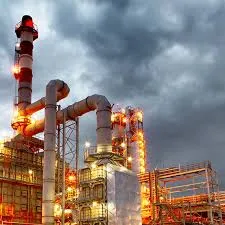
Sep . 05, 2024 22:41 Back to list
Steam Boiler Construction
Steam Boiler Construction An Overview
Steam boilers are essential components in various industries, serving as critical equipment for generating steam, which is used for power generation, heating, and manufacturing processes. The construction of a steam boiler involves several considerations, including materials, design, safety measures, and environmental concerns. Understanding the key elements in the construction of a steam boiler is crucial for engineers, contractors, and operators alike.
At the foundation of steam boiler construction is the selection of appropriate materials. Steel is the most commonly used material due to its strength and ability to withstand high pressures and temperatures. Specifically, carbon steel and alloy steel are preferred for their durability, while stainless steel is often used for its resistance to corrosion, especially in adverse conditions. The choice of material directly impacts the boiler's efficiency, operational lifespan, and maintenance needs.
The design of a steam boiler must adhere to industry standards and regulations, such as those outlined by the American Society of Mechanical Engineers (ASME). These guidelines ensure that the boiler can safely operate under the pressures and temperatures required for steam production. Common designs include fire-tube and water-tube boilers. Fire-tube boilers feature hot gases passing through tubes surrounded by water, which allows for efficient heat transfer. In contrast, water-tube boilers circulate water through tubes exposed to hot gases, leading to higher pressure capabilities and faster response times.
steam boiler construction

Safety is a paramount concern in steam boiler construction. Boilers operate under high pressure, and a failure could lead to catastrophic accidents. Incorporating safety features like pressure relief valves, water level indicators, and emergency shutdown systems is crucial. Regular inspections and maintenance routines are also vital to mitigate risks and ensure the boiler operates within safe parameters. Operators must be well-trained in understanding these safety mechanisms and performing necessary checks.
Environmental regulations play an increasingly significant role in the construction and operation of steam boilers. Modern boilers are designed with efficiency in mind, which helps to reduce fuel consumption and emissions. The use of advanced technologies, such as economizers and air preheaters, can enhance boiler efficiency. Additionally, incorporating pollution control systems, such as scrubbers and filters, helps to minimize the release of harmful substances into the environment, aligning with sustainability goals.
The construction process of a steam boiler is complex, often involving multiple stages, including engineering, fabrication, assembly, and testing. Each phase requires skilled labor and rigorous quality control to ensure that the final product meets operational specifications and safety standards. Following the construction, a thorough testing phase is necessary to verify that all systems function correctly and safely under operational conditions.
In conclusion, steam boiler construction involves a multifaceted approach that prioritizes material selection, design, safety, and environmental considerations. As industries widely depend on steam boilers for various applications, understanding these components is essential for ensuring efficient, safe, and sustainable operations. Continuous advancements in technology and a growing focus on safety and environmental impact will shape the future of steam boiler construction, paving the way for more innovative and sustainable solutions.
-
High-Efficiency Commercial Oil Fired Steam Boiler for Industry
NewsJul.30,2025
-
High-Efficiency Biomass Fired Thermal Oil Boiler Solutions
NewsJul.30,2025
-
High Efficiency Gas Fired Thermal Oil Boiler for Industrial Heating
NewsJul.29,2025
-
High-Efficiency Gas Fired Hot Water Boiler for Sale – Reliable & Affordable
NewsJul.29,2025
-
High Efficiency Biomass Fired Hot Water Boiler for Industrial and Commercial Use
NewsJul.29,2025
-
High-Efficiency Biomass Fired Hot Water Boiler for Industrial Use
NewsJul.28,2025
Related PRODUCTS






















